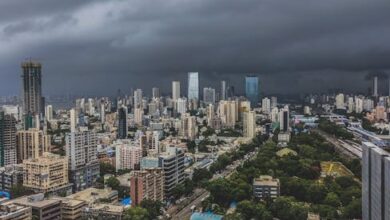The Unseen Adversaries: Heat, Humidity, and High Stakes

The roar of the crowd, the flash of a thousand cameras, the sheer drama of a penalty shootout under the global spotlight – this is the World Cup we all dream of. For fans, it’s a spectacle; for players, it’s the pinnacle of a career, a chance to etch their name into history. But beyond the glittering trophies and national anthems, there’s a less glamorous, yet critically important, side to these mega-tournaments: the nitty-gritty of playing conditions. It’s a topic often overlooked by casual observers, but for those on the pitch, it can make or break a dream. And as we look ahead to the unprecedented 2026 World Cup across the United States, Canada, and Mexico, one England star is already voicing significant concerns.
Reece James, the formidable England full-back known for his powerful runs and defensive solidity, isn’t just thinking about his next cross or tackle. He’s reportedly casting a wary eye towards the extreme heat and potentially unsuitable pitches awaiting teams in North America. For a player expected to be a cornerstone of Gareth Southgate’s squad, these aren’t minor quibbles; they’re fundamental issues that could profoundly impact performance, player safety, and ultimately, the outcome of the tournament. It’s a sobering reminder that even in the most anticipated events, the environment can be as much an adversary as the opposition.
The Unseen Adversaries: Heat, Humidity, and High Stakes
Imagine pushing your body to its absolute limit, sprinting up and down the wing for 90 minutes, all while the sun beats down relentlessly. Now, imagine doing that in a stadium where the temperature easily breaches 30-35°C (86-95°F), possibly with stifling humidity. This is not a hypothetical scenario for the 2026 World Cup. The tournament is set to take place in the summer months, and many of the host cities, particularly in the Southern United States and Mexico, experience scorching conditions during this period.
For a player like Reece James, a modern full-back whose game relies heavily on explosive power and relentless overlapping runs, the heat is a significant threat. Full-backs cover more ground at high intensity than almost any other position on the pitch. Every lung-busting run, every recovery sprint, every defensive duel will be magnified by the heat and humidity. Dehydration becomes a constant battle, recovery times between matches are compromised, and the risk of heatstroke or severe fatigue skyrockets.
We’ve seen the impact of extreme heat in past tournaments. The 2014 World Cup in Brazil, for instance, saw players visibly wilting in certain venues, affecting the quality and pace of games. While FIFA and host nations will undoubtedly implement measures like cooling breaks and advanced hydration protocols, there’s no truly negating the physical toll. It forces teams to adapt tactically, perhaps emphasizing possession over relentless pressing, and demanding unprecedented levels of squad depth to rotate fatigued players effectively.
It’s not just about player discomfort; it’s about performance degradation. Decision-making can be impaired, technical errors creep in, and the beautiful game loses some of its fluidity and intensity. For England, a team built on athleticism and high-tempo play, adapting to these environmental factors will be a crucial, perhaps even decisive, challenge.
Playing Surface Roulette: The Pitch Problem
Beyond the climate, James’s reported concerns extend to the playing surfaces themselves. This is another often-underestimated factor, yet it holds immense importance for professional footballers. The 2026 World Cup will utilize a vast array of stadiums, many of which are primarily used for American football (NFL) or Canadian football (CFL). These venues often feature artificial turf or, if they have natural grass, it may be temporary or less meticulously maintained than a dedicated football-specific stadium.
The difference between playing on a pristine, natural grass pitch and an artificial surface, or even a natural grass pitch that isn’t up to European club standards, is monumental. Artificial turf, while often durable, can be harder on players’ joints and muscles, increasing the risk of impact injuries. The ball’s bounce and roll are also fundamentally different, requiring subtle adjustments that can disrupt a team’s rhythm and passing accuracy. Even among natural grass pitches, variations in firmness, length of grass, and underlying soil structure can significantly alter the game.
The Injury Conundrum: A Greater Risk?
For a player like Reece James, who has unfortunately battled his fair share of hamstring and knee injuries throughout his career, the consistency and quality of playing surfaces are paramount. A hard or inconsistent pitch can place additional stress on ligaments and muscles, turning a routine tackle or pivot into a potential season-ending incident. It’s a cruel irony that players are expected to perform at their absolute peak in an environment where the very ground beneath their feet might actively conspire against their physical well-being.
The prospect of players having to adapt to vastly different pitch conditions from one game to the next, potentially across thousands of miles, adds another layer of complexity. It’s not just about getting used to a new climate; it’s about re-calibrating one’s body and playing style for each new environment. This isn’t just a concern for James; it’s a worry shared by countless players and medical staff who understand the long-term impact on professional careers.
A World Cup of Unprecedented Logistics and Adaptation
The 2026 World Cup is set to be the largest ever, featuring 48 teams spread across three nations and sixteen host cities. This scale brings with it unprecedented logistical challenges, from extensive travel distances and multiple time zone changes to varying local conditions. For teams, this means a rigorous schedule of flights, hotel changes, and adapting to new training facilities, all while maintaining peak physical and mental condition.
Player welfare, already a hot topic in modern football with packed club schedules, will be under intense scrutiny. The concerns raised by Reece James aren’t just about his personal comfort or performance; they highlight a broader issue for all participating nations. How will teams manage recovery? What role will sports science play in mitigating the effects of heat and travel fatigue? Will squad rotation become even more critical than ever before, potentially impacting team cohesion and consistency?
Ultimately, the teams that can best adapt to these diverse and challenging conditions – both environmental and infrastructural – will likely be the ones to progress furthest. It’s a test not just of skill and tactics, but of resilience, meticulous planning, and the ability to turn potential adversities into opportunities for growth. It underscores that winning a World Cup is about more than just beating the opposition; sometimes, it’s about mastering the elements themselves.
Conclusion
The World Cup is a celebration of football, a quadrennial event that unites billions. Yet, beneath the surface glamour, there are real, tangible challenges that players like Reece James and their teams must confront. His reported concerns about the heat and pitches for the 2026 tournament in the United States, Canada, and Mexico are not merely complaints; they are insightful observations from someone who will be directly experiencing these conditions at the highest level. They serve as a crucial reminder that while we anticipate moments of magic, we must also appreciate the immense physical and mental demands placed on these athletes.
As fans, we hope for a spectacular and fair tournament. For the players, their federations, and FIFA, the coming years will be a race against time to prepare for these unique challenges, ensuring that the stage is set for an epic competition where talent, not environmental factors, ultimately determines who lifts the coveted trophy. The resilience and adaptability of these world-class athletes will truly be put to the test, adding another compelling layer to the beautiful game’s greatest show.





